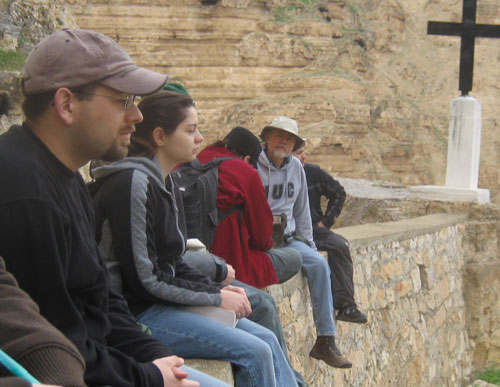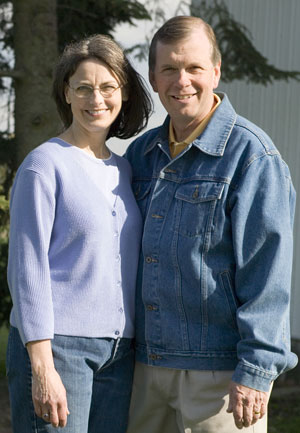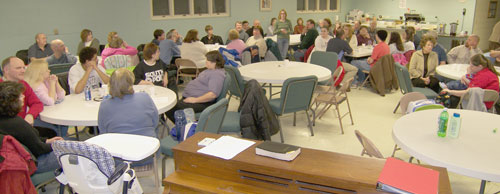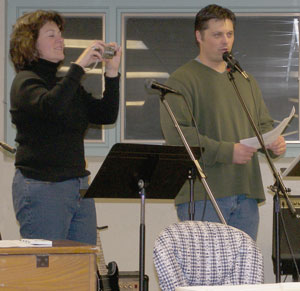March 7, 2007
|

Christina Warner (second from the left) and her class at the Wadi Qilt on the way to Jericho and before reaching St. George’s Monastary.
On the Eastern side of the Mount of Olives, past the separation wall, Huntington University student Christina Warner sits across the table from a Muslim family, who share stories about their lives after the start of the second uprising.
“The family has lost close family members, either because they were killed or jailed, since the beginning of the intifada,” said Warner, a senior Bible and religion major from Bloomington, Ind. “They were incredibly welcoming, and I was honored to be able to sit and listen to their stories.”
This family is one of millions of people who have suffered great loss because of the intifada. Since the separation wall has been erected, the people are cut off from the basic resources of the land and economy that would help them to survive and support their families.
There are many organizations that help the community. The local Mennonite Central Committee office in Palestine supports 15 organizations that help the Palestinian people while they are under Israeli occupation. Warner has joined in on the daily meetings, which has given her the chance to see firsthand what they do as well as help provide her with a better understanding of the current political and social situation.
“These organizations provide basic education, conflict resolution, jobs, agricultural resources and water,” Warner said. “They also support a couple of Israeli organizations which educate the Israeli public about the living conditions of Palestinian refugees, comparing the current quality of life with the quality of life before the occupation and displacement of the Palestinian people.”
Warner is involved in a study abroad program at Jerusalem University College on Mount Zion, next to the Old City. The Jerusalem University College is a small American Christian college that specializes in biblical archaeology, history of the Bible and the Middle Eastern cultures, religions and modern politics.
Each of Warner’s classes involves participating in one field study. The field studies are basically field trips throughout Israel. The students must pay close attention to what they see and learn so that they do well on their tests.
“So far I’ve been on field studies throughout biblical Jerusalem, Bethlehem, Jericho and Central Benjamin Plateau, an area that the Israelites crossed to get into Canaan,” said Warner.
Although, like most college students, Warner goes to classes and does homework. In her free time she roams around Jerusalem. She goes to a local lecture, works in the garden, spends time with MCC or goes to the New City, West Jerusalem, which is mostly Israeli homes and businesses, with other students.
Most of the city isn’t much different from the cities in the United States, but each section has different social customs. East and West Jerusalem have very diverse cultures.
“The dynamics between men and women are much different,” said Warner. “The conservative atmosphere and most of the Orthodox faiths here tend to view women as less than men, but it’s not taking too long to learn how to hold my own while being respectful.”
In West Jerusalem the primary language is Hebrew, but in East Jerusalem the primary language is Arabic. Although, most of the people speak English, the professors are fluent in the languages, but Warner plans to learn a bit of both Hebrew and Arabic while she is in Israel.



 Under the direction of Dr. Lance Clark, associate professor of communication (right), HTV 22 News is the student-produced weekly news magazine covering local news, sports and weather. The award-winning broadcast may be found online at HTVNews.net.
Under the direction of Dr. Lance Clark, associate professor of communication (right), HTV 22 News is the student-produced weekly news magazine covering local news, sports and weather. The award-winning broadcast may be found online at HTVNews.net.
